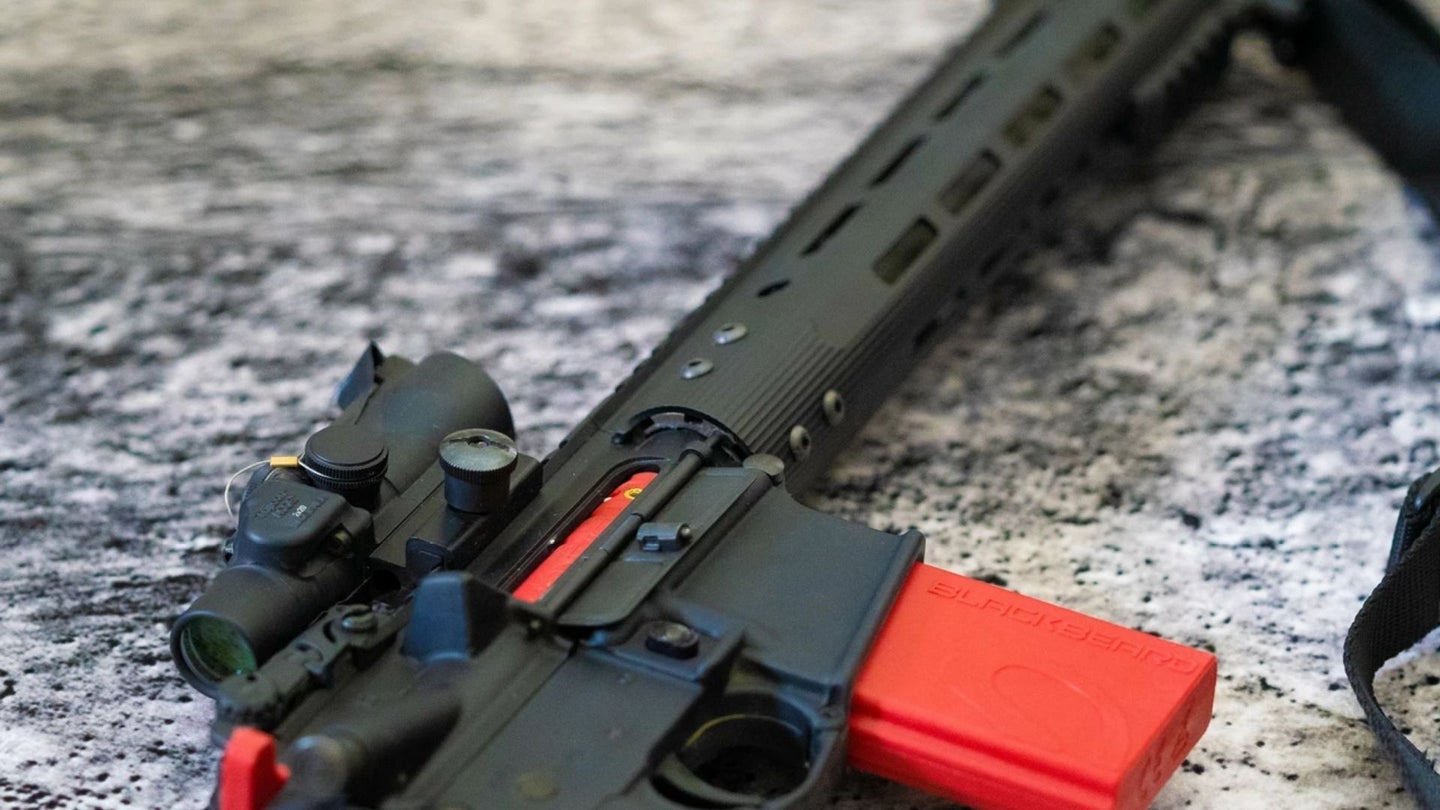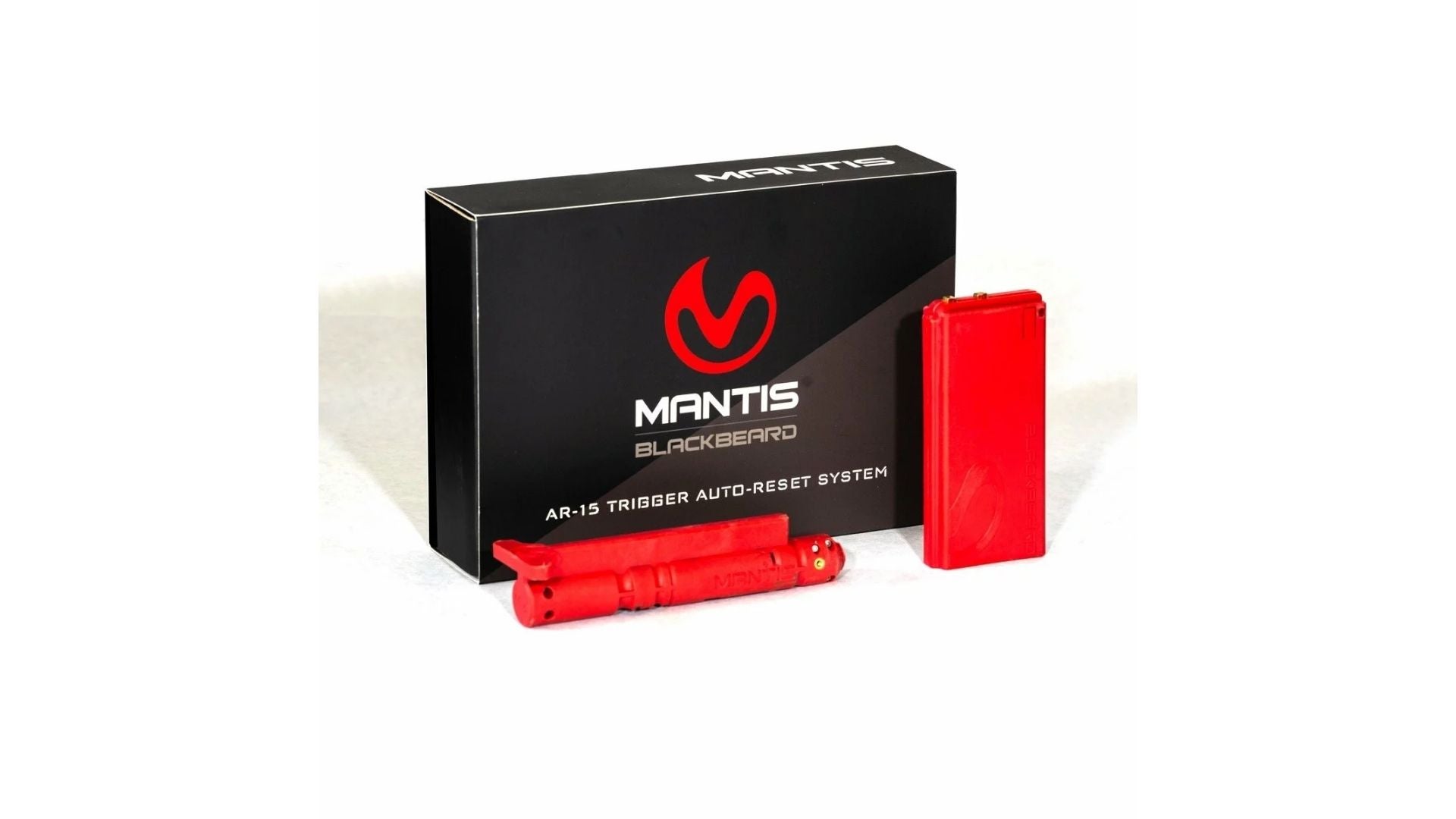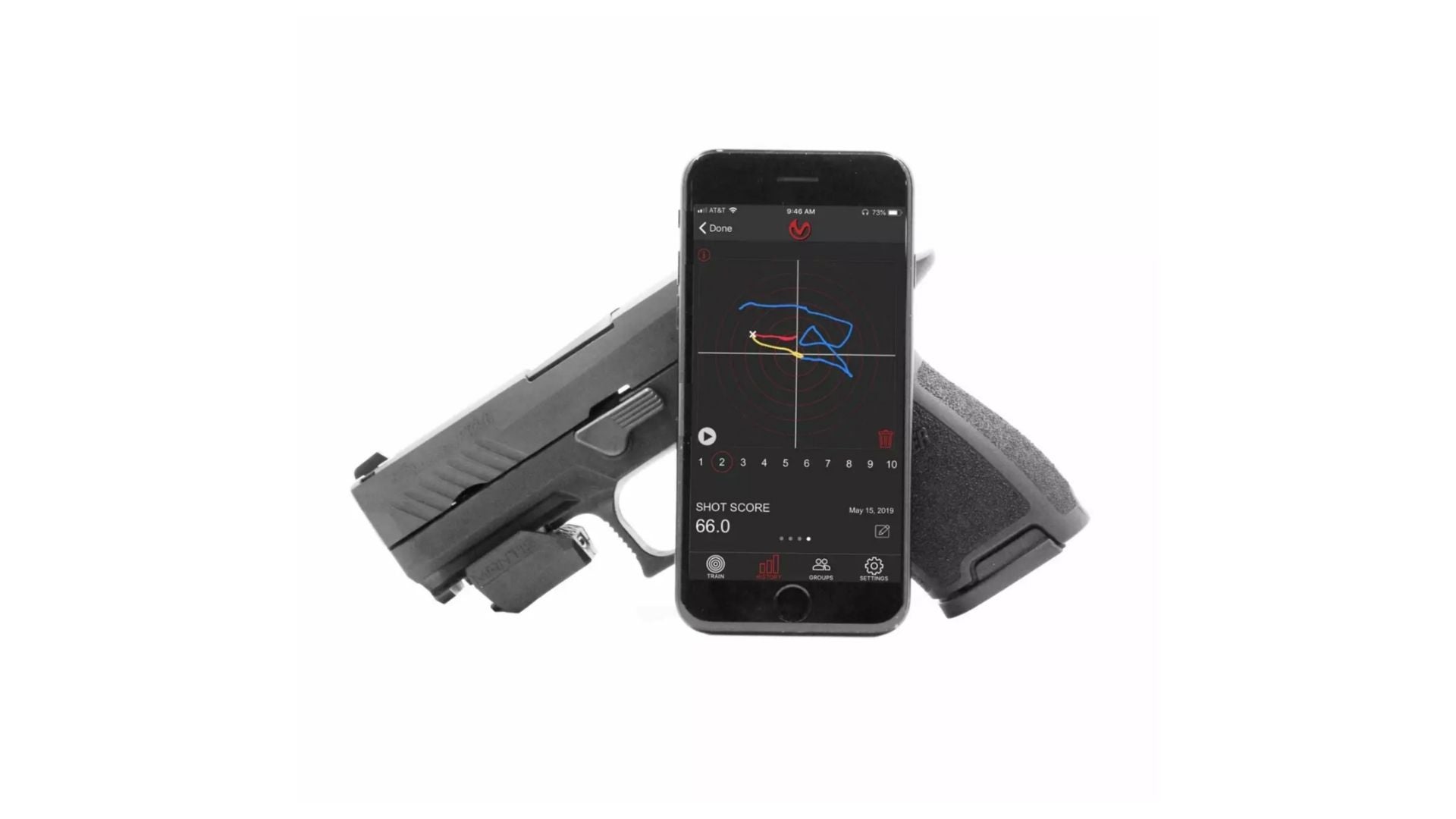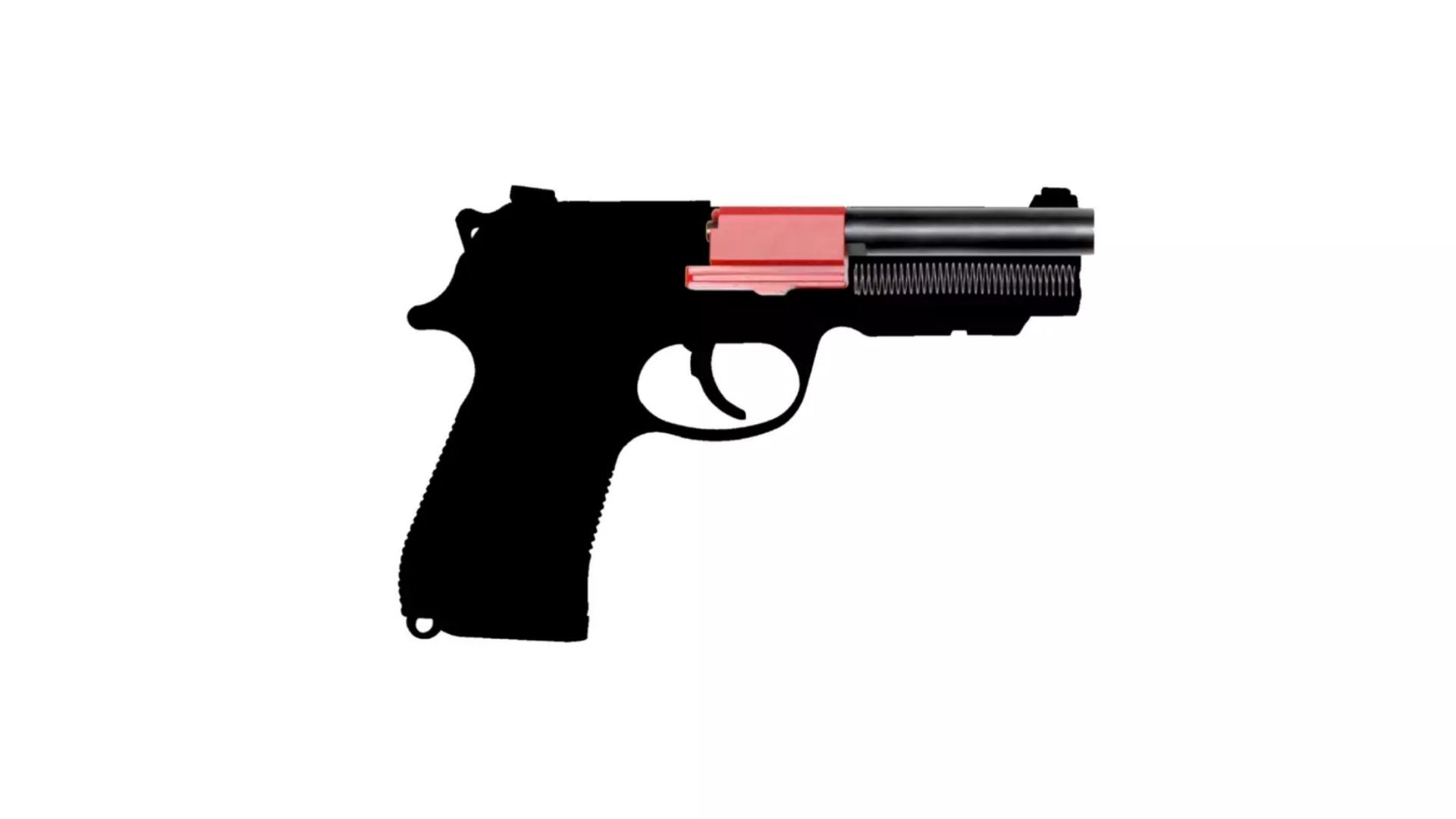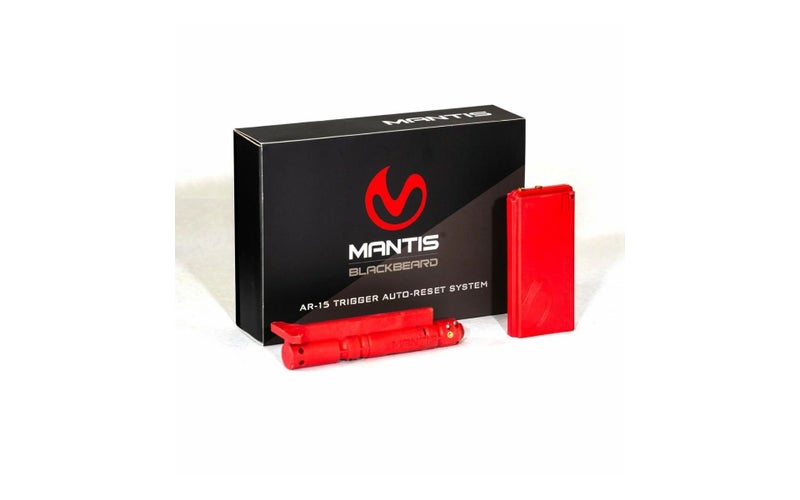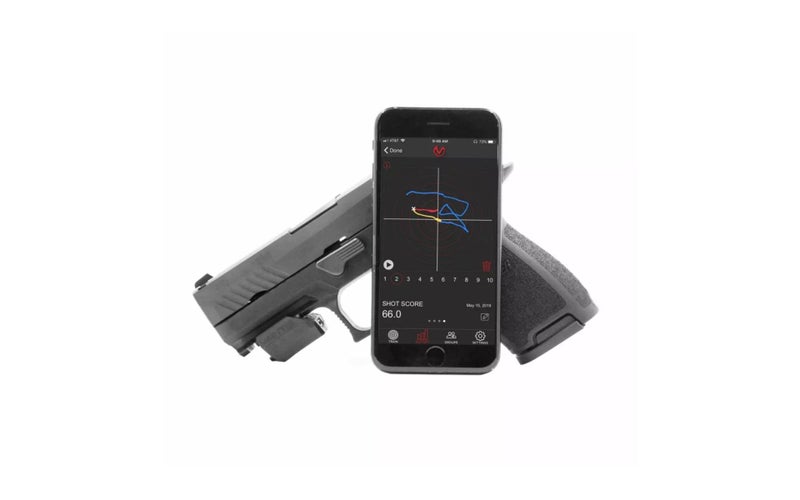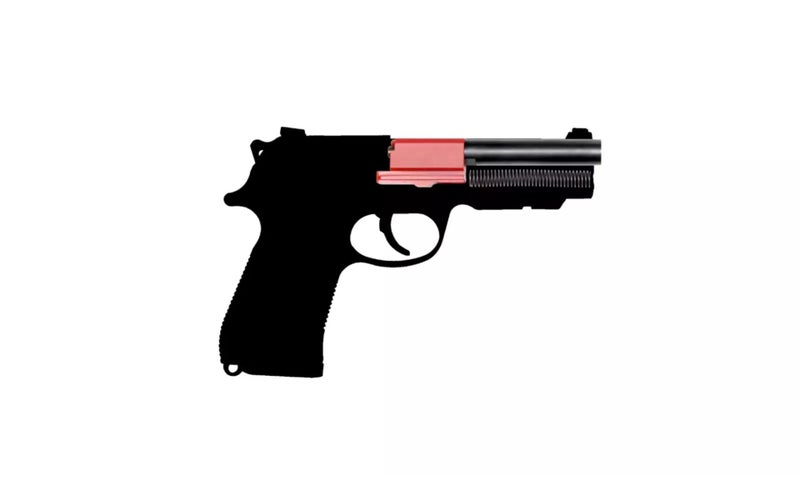We may earn revenue from the products available on this page and participate in affiliate programs.
In recent years, the cost of ammo has shot way up, but people still need to practice and sharpen their marksmanship skills. The days of sitting in the scorching sun during Grass Week, snapping in on a barrel and manually cycling your rifle are over. With technologically advanced dry fire training systems, the future is now.
The best dry fire systems inject realism into your training, whether it’s through the use of computer software, haptic feedback, or lasers to help you train to get your weapon on target every time. They ensure that you get meaningful training in the comfort of your home.
For this article, the Task & Purpose team tried every training tool on this list and more to see how well they improved our shooting skills.
- Best Overall: Mantis Blackbeard
- Best Value: Mantis X3
- Editor’s Choice: CoolFire Trainer
How we tested
Dry fire practice is something that I’ve been meaning to do more of in 2023, so I picked this assignment as a way to not only force myself to get better about practicing but to also have meaningful data to improve my training. Testing this, I used my Daniel Defense DDM4V7 PDW and my Beretta M9A3. Additionally, I relied on the supplemental experiences from some of my other colleagues to ensure that my experiences weren’t outliers when it came to what worked and what didn’t. Overall, this list is the result of combing through the available options on the market, cutting through gimmicks, and providing you with the training solution that fits your needs.
When we tested the Mantis Blackbeard Trigger Reset System, it was a high-performing item for anyone looking to get more rifle practice without spending a ton of money. A system that replaces the bolt carrier group and magazine of most AR-15 rifles, the Blackbeard allows the user to not alter the trigger pull of their weapon, and have visual feedback of where the “round” goes. The system consists of the bolt carrier replacement, which can house an adjustable laser and which also contains a motor that resets your trigger, as well as a battery pack that fits into the magazine well of the rifle like a normal magazine. To complement this, the Blackbeard can be used with the Mantis Laser Academy app, which allows for virtual target scoring for drills and games. Overall, for rifle training, it’s hard to outdo the Mantis Blackbeard, especially for indoor close-quarter training situations.
The Mantis Blackbeard excels in close-quarters rifle training, operating as a simple drop-in kit to give you realistic trigger reset. The biggest advantage to this is that it’s totally safe, due to making your rifle completely inoperable when properly installed, which means that you can theoretically use this for force-on-force or live hostage rescue. It’s also totally platform agnostic as long as you use an AR platform rifle, meaning you can use it with a Smith & Wesson M&P 15 or a military issue M4 with no extra steps. The biggest advantage, however, is that it lets you keep your trigger pull, meaning that if you’re like my friend, you can drop this into your super-expensive Radian Model 1 or LMT MARS (he has both) and appreciate the improved trigger pull that both bring with dry fire and with live fire. In my own testing, the Blackbeard greatly assisted with trigger control training, getting into a good rhythm of pressing and releasing the trigger, preventing short stroking.
The Blackbeard has no recoil or force feedback, and basically just functions as a trigger reset device and laser projector. This isn’t like the CoolFire on our list that actually provides force feedback, or the SIRT pistol, so you won’t get that simulated recoil impulse. Another thing is that even if you do use the app, it doesn’t track things like weapon or trigger control, so you won’t get the same input that you get with the Mantis X on this list. Finally, the app that you need to get training metrics from, Mantis Laser Academy, is extremely temperamental. It costs a fair chunk of money, doesn’t work in daylight, requires a tripod to use, and needs extensive setup to work properly, making this a decidedly indoor dry fire training system.
The Mantis Blackbeard is a laser trainer and trigger reset system that converts any rifle into a training rifle, and for those purposes, it’s nearly perfect. Allowing shooters to conduct dry fire training with their actual trigger pull, and without requiring them to manually reset the hammer, is extremely helpful, and the issues with not tracking motion and trigger control can be solved by adding a Mantis X device to the rifle to work in conjunction, although that lowers the value proposition significantly.
- Firearm compatibility: Most AR-15 platform rifles
- Force feedback: None
- Laser: Red, Green, IR, or none
- Reset: Electronic
Totally safe
Universal fit for ARs
Allows you to keep your trigger pull
No recoil
Does not track things like weapon and trigger control
App is temperamental
I will now transition from complaining about ammunition prices to complaining about training prices. Getting real training is essential to becoming a better shooter, since shooting is a perishable skill, but shooting instructors are real people with real living expenses, so their time is priced accordingly. The Mantis X3 represents a medium between not training at all and training with a live instructor, and provides automated feedback to help make you a better shot. Best of all, it’s not just for dry fire, as the X3 can be used for live fire feedback as well to analyze recoil control and sight recovery.
The Mantis X3 works by using a calibrated accelerometer that you program with your specific type of firearm, the caliber, and where the unit itself is mounted on the weapon. Through these factors, the system is able to analyze the shooter’s grip, trigger pull, and weapon control. The connected app prescribes instructions on a drill to do, and evaluates how well you do based on those instructions with real visual feedback. This is the largest advantage of the X3 system, since it provides a one-stop shop for training practice that actively makes you a better shooter. In my own testing, I found that I became much more conscious of my grip and trigger pull, learning by muscle memory what scored higher and learning to self-diagnose my shots. A final advantage is that the Mantis X3 is relatively compact, being the size of a small laser unit or weight, so it will fit on most handguns or onto their magazines with an adapter.
The biggest downside of the Mantis X3 is that without other add-ons, you don’t get the visual feedback of a laser, or any sort of force feedback when dry firing. Additionally, you have to manually reset the trigger every time you pull it, or use double action, depending on the pistol, which interrupts your grip and sight picture. If you have a weapon that doesn’t have Picatinny rails, you need an adapter to make it work, which can further complicate things and add costs. Compounding this, if you use the accessory rail on the bottom of the frame of many common handguns, the Mantis X3 can prevent you from using the holster, which removes a crucial element of handgun training (i.e., the draw).
The Mantis X3 is a different sort of dry fire training aid, providing real training instruction that will make you a better shot using accelerometers and a companion app. It doesn’t provide trigger reset or any sort of force feedback, but it’s not supposed to, and can be used with systems that provide those, or even during live fire.
- Firearm compatibility: Any weapon with a Picatinny rail or adapter
- Force feedback: None
- Laser: N/A
- Reset: N/A
Provides actual training feedback
Compact
Can be used for dry and live fire
Does not provide any force feedback
Needs rails or adapters to work
Requires re-racking the slide
The CoolFire is, well, cool. It consists of a drop-in barrel for common handguns that reciprocates the slide using compressed gas, allowing you to enjoy realistic function of your weapon in a training environment, which not only helps solve the issue of trigger reset on a pistol, but also provides simulated recoil that’s only slightly lighter than the real thing. Additionally, you can augment the force feedback and trigger reset with a laser unit that attaches to the end of the barrel, further enhancing the training value by providing a visual aid and making this system compatible with various laser training apps. Best of all, barring the possibility of a laser attachment or an outside CO2 extender, it doesn’t disrupt the outside profile of your weapon, meaning that it won’t affect how you holster your weapon as much with common competition-style holsters.
The CoolFire is essentially a Mantis Blackbeard, but powered by CO2 gas and for a pistol, at least in terms of function. By using gas blowback to re-cycle the slide, the CoolFire not only provides the ability to dry fire without manually cycling the slide, but also creates both sound and recoil, further enhancing the training value. The fact that this system doesn’t touch or affect the trigger of the weapon also means that your trigger pull will be the same as with live fire, which is especially essential for competition pistol shooters who have highly tuned triggers. Finally, adding one of the laser units onto the end of the pistol allows you to take advantage of laser training software like the Mantis Laser Academy, which is kind of heretical to do, but it works.
The biggest problem with the CoolFire is that gas is far more limited in terms of capacity than electricity, so you’ll have to charge this more. The gas has to push the heavy steel slide against spring pressure, which uses a lot of CO2. You’re only going to get one simulated “magazine” of ammo’s worth of gas at the most, so it’s best to recharge this manually between strings of fire or drills. This annoying ritual is then compounded by the fact that the gas cools down the CO2 reservoir as it escapes, lowering the volume of the gas, and lowering the output pressure. What this means is that if you fire too rapidly, the pressure won’t be sufficient to adequately cycle the slide, leading to reduced recoil, sluggish response, or short-stroke recoil of the slide. The optional laser unit doesn’t add much bulk, but it adds some, meaning that if you wanted to use this to train for inside-the-waistband carry or train with a Safariland holster, you may need to permanently modify your holster in a potentially destructive way to accommodate the muzzle device. Going without the laser can help this, but then you lose your ability to collect what limited training feedback you can get by using this with a laser training program. Finally, this is an expensive system, with a full setup costing almost as much as a used Glock in some cases, making it a very interesting but very costly option with limited functionality.
The CoolFire is a great premium training tool, and is one of the best pistol dry fire tools out there, provided that you know how to use it. You’ll have to replenish the gas often, and pair it with an optional laser attachment or the Mantis X system to get actual training feedback, but if you’re willing to stomach the price, it’s one of the better ways to simulate the function of your handgun of choice.
- Firearm compatibility: Most popular duty or competition handguns
- Force feedback: CO2 gas blowback
- Laser: Optional for added cost
- Reset: CO2 gas blowback
Keeps weight and trigger pull realistic
Real force feedback
Laser attachments available
Expensive
Runs out of gas easily
No training feedback
Our verdict on dry fire training systems
Dry fire training sounds boring, but it doesn’t have to be. It’s an entire ecosystem of products that allows you to get as close as you can to the real thing, without actually having to spend the money and time getting to a range and firing live rounds.
The Mantis Blackbeard is a great option for nearly anyone who shoots an AR platform rifle, since it drops into almost any rifle, and turns it into a laser training tool.
The Mantis X3 actively coaches you through your training, supplementing a live coach and working in conjunction with the other options on this list, either as a standalone tool or a supplement.
The CoolFire Trainer gives most popular pistols realistic functionality, as long as you can overcome the inherent issues with using compressed gas.
No matter what your platform of choice, dry fire practice is essential, and these systems will help make you a better shot.
What to consider when buying dry fire training systems
No matter what your dry fire needs, there are specific features and considerations that will affect which system you choose, depending on the type of training that you need, your choice of weapon, and your desired functions.
Types of dry fire training systems
Motion sensors
Motion sensors are accelerometers that attach to your weapon and detect things like weapon sway, trigger pull, hand shaking, and other factors that would throw off your shots. These systems take these factors and use them to grade things like your grip, how far you’re pulling the weapon in any particular direction when you pull the trigger, and so forth.
Laser inserts
Laser inserts are devices that plug the barrel of a weapon, and briefly flash a laser down the barrel when the trigger is pulled to simulate the point of impact of a fired round. These systems can take the form of barrel or bolt swaps, or laser bullets that trigger the laser when the “primer” of the bullet is struck by the firing pin.
Trigger reset systems
Trigger reset systems allow you to get a natural trigger pull without having to manually reset the hammer of the weapon, which is essential for single-action or striker-fired pistols, and most rifles. These work by some mechanism re-cocking the trigger as soon as the shooter pulls it, allowing uninterrupted trigger pulls.
Dry fire weapons
Dry fire weapons are entire simulated weapon systems that replicate the function of real firearms, and often include a laser as well. A good example of these are the SIRT weapons, which didn’t make our list because of how specialized they are. However, for those who want a separate weapon system for total safety for professional training, these are a fantastic option.
Key features of a dry fire training system
Firearm compatibility
The firearm compatibility of a dry fire system is an important factor for choosing something that works for what you have. Certain systems like the Mantis X3 work with nearly any firearm, whereas the Blackbeard works with an entire category of firearm. Some, like the CoolFire, need to be selected for the specific weapon you have, due to the nature of how the system works.
Force feedback
Certain dry fire systems introduce an element of force feedback to simulate recoil, allowing you to better prepare for having to readjust your grip in between shots, manage your sight picture, and other factors. This is often achieved using an electric motor or gas blowback.
Laser
Many dry fire systems project a laser to give the shooter a visual aid to know where their point of impact would be. When properly zeroed, this can be used to illustrate concepts like the difference between point of aim and point of impact at certain distances, height over bore, and snap-shooting.
Trigger reset
Trigger reset systems re-cock the hammer automatically in between shots to allow for effective semi-auto shooting practice. This is often tied together with force feedback systems, especially on handguns, since their triggers are reset by slide action.
Pricing of a dry fire training system
Dry fire training systems are complex, so the budget end of them is $100 to $200, where you’ll find basic laser projectors and accelerometers that don’t allow for live fire. From $200 to $300, you’ll find accelerometers that allow for live fire, trigger reset systems like the Blackbeard, and the beginnings of force feedback systems. From $300 and up, you have advanced accelerometers, force feedback systems like the CoolFire, and training weapons like the SIRT rifles and pistols. Theoretically, the combined prices of an advanced motion tracker and a trigger reset system like those from Mantis, while full-featured, could cost over $500.
FAQs about dry fire training systems
You’ve got questions. Task and Purpose has answers!
Q: Is it difficult to learn how to use laser dry fire training systems?
A: There can be a learning curve with some systems, namely setting up the software or zeroing the laser on laser dry fire training systems like the Mantis Blackbeard, but most of these systems include clear and concise information on how to set it up.
Q: What about recoil and loading a magazine?
A: Using a system with force feedback like the CoolFire helps simulate recoil, and systems like the Blackbeard have their power stored in a magazine-shaped battery. The CoolFire doesn’t impede magazine loading, so you can still practice magazine changes that way. For ultimate function, a system like a SIRT laser training pistol is best.
Q: Where should I place the target?
A: Depending on your drill, place a target at a realistic engagement distance. The FBI minimum is 21 feet, but factors like being indoors vs outdoors, size of the target, and the system you’re using can affect that.
Q: How does laser dry fire training systems help with concealed carry licensing?
A: Certain states have training requirements to qualify for a concealed carry license or permit, and while these tests are not overly onerous in terms of the requirements for accuracy, novice shooters may find a dry fire system helpful to familiarize themselves with their weapon before they go to qualify for their license. In addition, training both dry and live fire is essential to maintain an adequate level of proficiency to reliably ensure that you could defend yourself from an attacker.
Q: What kind of lasers do laser dry fire training systems use?
A: Dry fire training systems almost exclusively use Class A lasers, either red, green, or infrared. This is for safety purposes, given that Class A lasers pose minimal risk to the human eye, and they don’t consume much battery power or produce much heat. The different colors are personal preference mostly, but infrared lasers can help shooters not rely on the flash of a laser impact to aim their weapon while still allowing the camera on their phone to pick up the light for scoring purposes on an app like Mantis Laser Academy.
Q: How many shots can be fired using the laser dry fire training system?
A: It depends on the system. Most are only limited by battery life and your trigger finger cramping, but systems like the CoolFire have a limited store of compressed CO2 and need to be replenished in between strings of fire.
Q: Can I use my laser dry fire training system to train for multiple firearms?
A: It depends on the system. For things like the Mantis X3, it can fit on any firearm with a Picatinny rail, and the software can be programmed for multiple configurations. For the CoolFire, it needs to be purchased for the exact handgun that you plan on shooting with.
